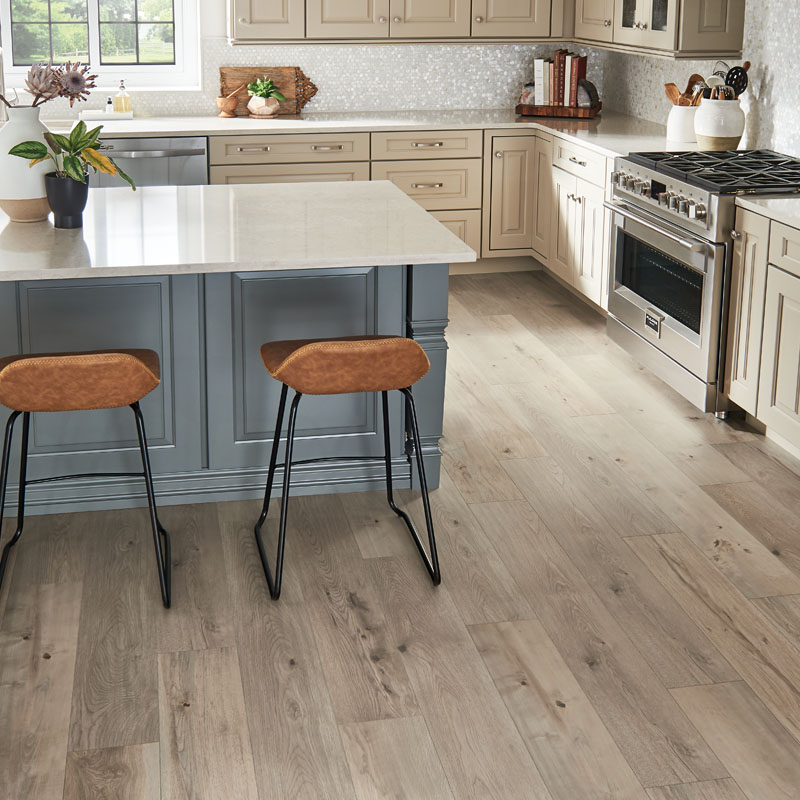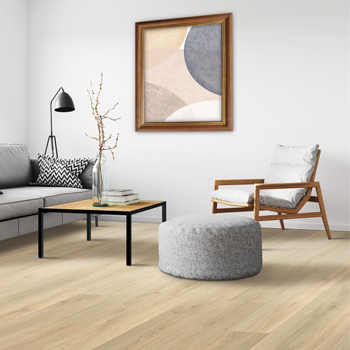Everything You Need to Know About Laminate Flooring
Thinking about upgrading your home with laminate flooring? We’ve got you covered. At Flooring America, we’ll help you find the perfect design and finish to match your style—and your budget. From the benefits of laminate to easy maintenance tips and installation advice, our FAQ has everything you need. Durable, affordable, and totally you. Let’s elevate your space together.
Shop Laminate Flooring
Expert FAQ Laminate Flooring Guide
How Durable is Laminate Flooring?
Laminate flooring is highly durable due to its tough wear layers that resist scratches, dents, and stains. It's perfect for high-traffic areas like kitchens, hallways, and living rooms, and ideal for families with kids or pets. To maintain its durability, avoid dragging heavy furniture or using sharp objects on the surface.
Is Laminate Flooring Waterproof or Water-Resistant?
Laminate flooring can be either water-resistant or waterproof, depending on the type:
- Water-Resistant Laminate: Protects against spills and moisture for a short time if cleaned promptly. Ideal for low-moisture areas like bedrooms and living rooms.
- Waterproof Laminate: Designed to withstand extended water exposure, making it perfect for high-moisture spaces such as kitchens, bathrooms, and laundry rooms.
When choosing laminate flooring, always check the manufacturer’s specifications to determine its water resistance level. Waterproof laminate is the best choice for areas with high humidity or frequent moisture. Look for our waterproof seal to easily identify waterproof flooring options, both in-store and online!
Can Laminate Flooring Be Installed in Kitchens and Bathrooms?
Yes, laminate flooring can be installed in kitchens and bathrooms, provided you select the appropriate type. Choose waterproof laminate flooring for moisture-prone areas and ensure it’s installed by experienced professionals for the best results. Promptly cleaning spills and limiting prolonged water exposure will help preserve the flooring’s quality.
What Should You Look Out for When Buying Laminate Flooring?
When selecting laminate flooring, keep these key factors in mind to make the best choice for your home:
- Water Resistance: Choose between water-resistant and waterproof options based on the room’s moisture levels.
- Style: Explore a wide range of designs, including natural wood grain and stone-look finishes, to match your décor.
- Installation Method: Proper installation is key to a flawless finish—trust our experts to get it done right.
Review product details carefully to ensure the flooring aligns with your functional and aesthetic preferences.
What Are the Benefits of Wood Look Laminate Flooring?
Wood-look laminate flooring combines the charm of hardwood with the durability and affordability of laminate. It’s available in various finishes, such as oak, walnut, and maple, to replicate the natural appearance of real wood. Laminate is a durable and practical option for active households, as it may resist scratches, dents, and fading. It also offers the beauty of wood-look designs with easy installation and maintenance, providing a cost-effective alternative while maintaining great style.
Stay informed and make smart decisions when choosing laminate flooring for your home.

See Your Floors,
Love Your Space
Imagine your dream floors in your home, all in just three simple steps. Snap a pic, pick a style, and preview instantly. It’s like trying on flooring—no commitment, all excitement. Start exploring now and fall in love with your space!
Try Room Visualizer

